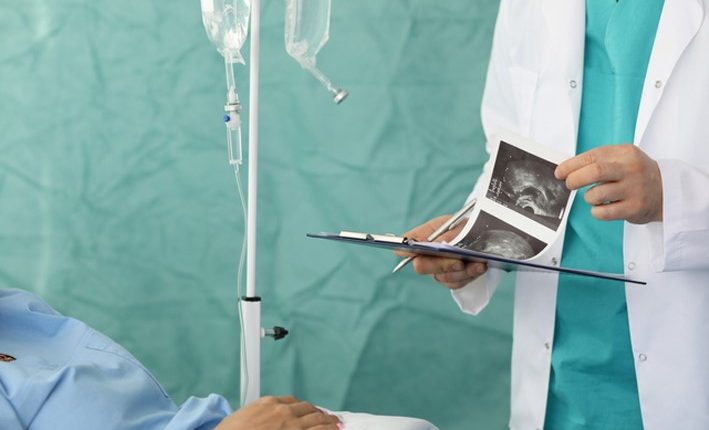
Pain treatment and analgesic therapy: what is it?
Pain therapy refers to a medical treatment that aims to eliminate pain, whether nociceptive or neuropathic
Pain therapy, also known as analgesic therapy or algology, includes both drug administration, surgical treatment, rehabilitation activities and psychotherapeutic support, depending on the type of pain to be treated and its causes.
The desire to control pain has always characterised all human cultures.
In this sense, pain therapy (or rather the attempt to modify algic symptomatology) has in fact very ancient origins
Thus, already in primitive societies, shamans and sorcerers adopted religious magic practices (in any case linked to the unconscious), aimed at warding off the ‘evil spirit’ held responsible for the individual’s suffering .
This exogenous, purely ‘intrusive’ concept of pain can already be found in the Assyro-Babylonian and Egyptian civilisations.
To the latter dates the localisation of the centre of sensitivity in the heart, a concept that will persist unchanged for centuries.
Pain therapy uses numerous instruments: analgesic drugs, physical therapies, techniques very close to surgical operations known as ‘blocks’ and even, today in rare cases, true neurosurgical procedures.
Analgesic drugs
The treatment of pain with pharmacological therapy makes use essentially of NSAIDs (non-steroidal anti-inflammatory drugs, always with good or excellent analgesic activity), weak and strong opioids, anticonvulsants and antidepressants (widely used in neuropathic pain) and local anaesthetics.
NSAIDs are usually the first step in pain therapy
These drugs are particularly effective in ‘nociceptive’ pain; however, when administered alone, they can usually only be used for limited periods of time due to side effects, especially in the first digestive tract (burning, bleeding, ulcers).
In addition, the analgesia of NSAIDs is characterised by a ‘ceiling effect’: indefinitely increasing doses beyond a certain maximum dose, identified in clinical studies preceding the marketing of the analgesic, only causes an increase in side effects, but not in analgesia.
Antidepressants and anticonvulsants are mainly used in chronic pain of the neuropathic type.
Local anaesthetics, active mainly on nociceptive forms of pain, act both on peripheral nerves and on neurons of the central nervous system.
Opioid drugs
The second step in the treatment of nociceptive pain is represented by weak opioids such as codeine, followed by strong opioids such as morphine.
All opioids, weak and strong, act through a filtering or gate effect, more or less intense, on the transmission of the pain impulse at the spinal cord and other parts of the central nervous system.
In practice, opioids allow only a fraction of pain impulses to be transmitted to the cortex; at adequate doses, the gate closes completely and opioids suppress the transmission of pain impulses altogether.
Weak opioids cannot control very intense pain, but they also expose the user to a reduced risk of addiction and are therefore used for mild to moderate pain.
However, weak opioids often fail to control chronic pain for more than four weeks on average, after which a switch to a strong opioid is usually necessary.
Strong opioids do not have the ceiling effect characteristic of NSAIDs: they control particularly intense acute pain such as that of a heart attack well, but above all, precisely because of the absence of a ‘ceiling effect’ and the possibility of increasing the dosage, they are useful, often indispensable, for controlling intense chronic pain caused by malignancies.
Like analgesia, the undesirable effects of weak and strong opioids also develop in the central nervous system: sedation, drowsiness, vomiting, dizziness, risk of physical and psychic dependence
Physical therapy: roentgentherapy
Of the analgesic radiation therapy techniques, roentgentherapy (targeted administration of X-rays) is the most effective.
The electrons that are released in the irradiated tissue have a powerful anti-inflammatory and analgesic effect.
Electrical stimulation of nerve structures involved in the origin and transmission of pain can also be very useful.
TENS is based on this principle, which is carried out with portable devices capable of stimulating the skin and nerve structures.
Pain blocks
Blocks are pain control techniques that, by their nature, are very close to surgical procedures, although they are usually practised on an outpatient basis.
Blocks may be of the pharmacological or ‘neurolytic’ type.
In the former case, local anaesthetics are used, injected into well-defined nerve structures or into areas adjacent to these: for example, a ganglion attached to the trigeminal nerve to control the most severe forms of trigeminal neuralgia or in the vicinity of the spinal cord to obtain so-called ‘peridural’ analgesia, which eliminates painful sensitivity without the need to put the patient completely to sleep.
The purpose of all blocks is to reversibly suppress the transmission of nerve impulses on their journey from the nociceptors to the cerebral cortex.
The question of the reversibility of the blockade achieved with local anaesthetics is important because, in neurolithic-type blocks, substances injurious to nerve structures are used, which are injected into these structures with the aim of causing a definitive loss of their function.
In cases of very severe pain and usually in terminal patients, the same end can be achieved by appropriate surgical techniques of elimination or sectioning of particular anatomical structures: for example, the bundles of nerve fibres running from the spinal cord to the thalamus.
Read Also:
Emergency Live Even More…Live: Download The New Free App Of Your Newspaper For IOS And Android
Epidermolysis Bullosa And Skin Cancers: Diagnosis And Treatment
SkinNeutrAll®: Checkmate For Skin-Damaging And Flammable Substances
Healing Wounds And Perfusion Oximeter, New Skin-Like Sensor Can Map Blood-Oxygen Levels
Psoriasis, An Ageless Skin Disease
Psoriasis: It Gets Worse In Winter, But It’s Not Just The Cold That’s To Blame
Childhood Psoriasis: What It Is, What The Symptoms Are And How To Treat It
Topical Treatments For Psoriasis: Recommended Over-The-Counter And Prescription Options
What Are The Different Types Of Psoriasis?
Phototherapy For The Treatment Of Psoriasis: What It Is And When It Is Needed
Infrared Therapy For Pain: What Does It Consist Of?
Fibromyalgia: Where Are The Tender Points That Cause Pain On Palpation?
Pharmacological Interventions During Chest Pain



